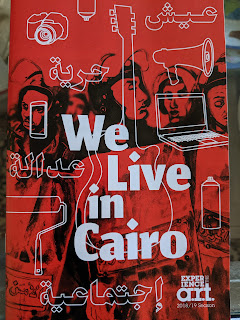No memorial for 1857 Indian heroes
The news below was released by the Ministry of Culture, not sure what prompted this press release, but it is supposed to show that GOI cares about 1857 by telling us that how they are preserving our history of 1857 war by maintaining these three museums.
Incidentally, I have visited all three museumes mentioned in this press release, although Lucknow museum visit was few years ago. So, I can say with some authority that all these museums are protecting the documents and artefacts left behind by the British. More than 60 years since India's independence but still we have made no effort to do our own research or make an effort to preserve the documents and aretefacts that can throw new lights on Indian version of the events.
Now, ASI proudly tells us that it is propagating and maintaining the British story of 1857. It is not bad enough that we don't have a museum for the brave Indian soldiers of 1857 war now they rub the salt by saying that they are preserving British documents and memories of this war.
http://www.pib.nic.in/release/release.asp?relid=56639
Incidentally, I have visited all three museumes mentioned in this press release, although Lucknow museum visit was few years ago. So, I can say with some authority that all these museums are protecting the documents and artefacts left behind by the British. More than 60 years since India's independence but still we have made no effort to do our own research or make an effort to preserve the documents and aretefacts that can throw new lights on Indian version of the events.
Now, ASI proudly tells us that it is propagating and maintaining the British story of 1857. It is not bad enough that we don't have a museum for the brave Indian soldiers of 1857 war now they rub the salt by saying that they are preserving British documents and memories of this war.
http://www.pib.nic.in/release/release.asp?relid=56639
3 Site Museums preserving historical documents and memoirs of First War of Independence-1857
11:30 IST
There are three Site Museums under Archaeological Survey of India wherein historical documents or memoirs related to First War of Independence 1857 are preserved. They are:
(i) "1857 Memorial Museum" at Lucknow has been established in the annexe of the Residency building which was earlier used for displaying a model of the Residency Complex. The ruins of the building reminds us of the great uprising of 1875 in Lucknow and are preserved in the same condition in which they came under central protection in the year 1920.
The museum, designed to present a visual accounts of the freedom struggle of 1857, have a collection of five hundred eleven (511) objects which includes a model of the Residency, old photographs, lithographs, paintings, documents, period objects such as guns, swords, shields, musketing cannons, rank badges, medals and other items. Diorama and paintings on canvas showing some of the battle at the Residency and other relating to the theme also form part of the display.
The exhibits present the story of 1857 in a chronological order. Original photographs and lithographs of many sites, connected with the uprising, and paintings depicting significant events of the uprising have been displayed along with portraits of local heroes. A number of maps showing strategic positions in Lucknow, the center of the uprising of 1857, map of the Residency and a drawing of the layout of the gallery have also been displayed.
Recently a new gallery has been added to the basement of the museum which houses the artifacts recovered during the excavation in the southern portion of the Residency complex. These include various terracotta human and animal figurines, a loaded revolver, porcelain wares, cannon balls, terracotta roof tiles, fragments of wine bottles, and silver plated whisk fly, etc.
(ii) Mumtaz Mahal Museum, Red Fort, Delhi houses forty two objects related to first War of Independence 1857 which includes, maps, lithographs, letters, paintings, inscriptions, arms used by the then Nawab of Pataudi and Bahadur Shah in the war of 1857, field glass used by General J. Nicholson during the siege of Delhi.
(iii) Swatantrata Sangram Sanghralaya, Delhi was set up in one of the double storeyed army barracks in the year 1995 and is located inside Red Fort considering the role of the Red Fort in the Freedom Struggle. The museum provides a glimpse of major phases of India's struggle for freedom, which includes Prelude to 1857 uprising, First War of Indian independence etc. till the time freedom was achieved on 15th August, 1947. Fourteen objects mainly consisting of lithographs, arms, letters etc. associated with First War of Independence, 1857 are displayed.
Archaeological Survey of India only maintains and develops site museums and centrally protected monuments as per provisions of Ancient Monuments Archaeological Sites and Remains Act 1958.

Comments